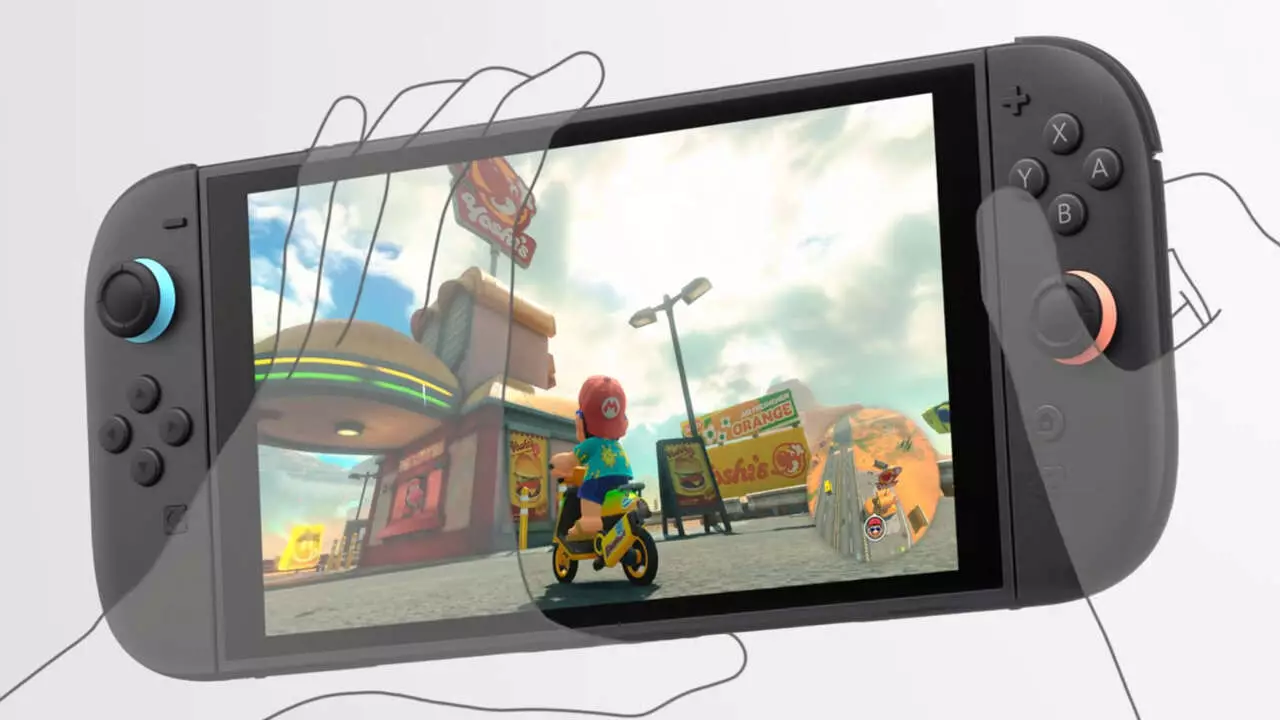Nintendo has forever changed the gaming landscape, drawing players into its imaginative worlds for decades. With the impending launch of the Switch 2, many gamers are buzzing with excitement over one of the most intriguing innovations: the magnetic Joy-Con 2 controllers. However, to appreciate this development, we must journey back in time to an era when Nintendo first experimented with the concept—in particular, the precursor to the original Switch, which provides deeper insight into the company’s evolving design philosophy.
The tale begins with Kouichi Kawamoto, a producer at Nintendo whose dedication to innovation reveals the company’s commitment to user experience. During the early stages of the original Switch’s development, a prototype featuring magnetic Joy-Con controllers caught the attention of the late President of Nintendo, Satoru Iwata. Unfortunately, despite Iwata’s visionary thinking, the idea was abandoned due to concerns regarding the wobbling instability caused by the magnetic connections.
Designing for Stability Over Aesthetics
Kawamoto’s recollections shed light on an essential aspect of game console design: while innovation is imperative, stability remains paramount. The team opted for a rail system that allowed for a more stable connection, ensuring users would experience a seamless gaming experience. The decision illustrates a fundamental principle that I believe is crucial in design—prioritizing functionality over flashiness often leads to greater user satisfaction.
In retrospect, Iwata’s hesitance to embrace this magnetic system reflects a deep understanding of market needs. Had the magnetic Joy-Cons been frail and susceptible to wobbling, consumers might have perceived the console as unreliable. The decision to prioritize stability has undoubtedly contributed to the original Switch’s enduring success, which has sold over 100 million units globally.
The Return of the Magnetic Idea: Persistence Pays Off
Yet, Nintendo’s journey didn’t end with the rejection of the magnetic prototype. Even after shelving it, the team kept researching how magnets could be integrated into their designs, showcasing their relentless pursuit of creativity. Tetsuya Sasaki, a general manager in Nintendo’s technology division, provided insight into this tenacity, stating that the team wasn’t ready to relinquish the dream of a better connectivity solution. Their perseverance is commendable; it speaks volumes about Nintendo’s commitment to refining their technology to enhance the user experience.
The resurrection of the magnetic Joy-Con concept for the Switch 2 embodies the company’s iterative design philosophy. The Joy-Con 2’s features showcase a commitment to accessibility—Nintendo aims to enable ease of use even for children, a vital demographic that should be able to engage with gaming without unnecessary barriers. This focus on intuition in design speaks to how advancements should not only meet the needs of seasoned players but also welcome newcomers into the fold.
The Future is Bright: Enhanced Features for Enhanced Gaming
As we look ahead to the Switch 2, we are met with an impressive assemblage of new features. Beyond the magnetic Joy-Con 2 controllers, the console promises support for HDR visuals, 4K resolution when docked, and the ability to achieve 120 frames per second in select titles. These technical enhancements elevate the gaming experience and demonstrate Nintendo’s commitment to blending cutting-edge technology with beloved gameplay traditions.
Additionally, the new lineup of exclusive games, including Mario Kart World and a sequel to Kirby Air Ride, showcases that Nintendo is not merely a console manufacturer but a steward of memorable gaming experiences. By continuously evolving their hardware while simultaneously launching engaging narratives, they strike a fine balance between innovation and nostalgia.
A Cultural Phenomenon Embracing Evolution
At its core, Nintendo’s creative evolution mirrors the very essence of gaming culture. It is a dance of tradition and innovation, where the old is not completely discarded but rather refined and revitalized. The incorporation of magnetic Joy-Con controllers into the Switch 2 stands as a testament to this philosophy, blending cherished legacies with future possibilities.
As the release date approaches, one cannot help but feel enthusiastic about what lies ahead. The Switch 2 is not just a new console; it represents Nintendo’s unwavering dedication to its craft—crafting consoles that resonate with players on multiple levels, ensuring that the joy of gaming remains accessible, engaging, and ever-evolving.


Leave a Reply